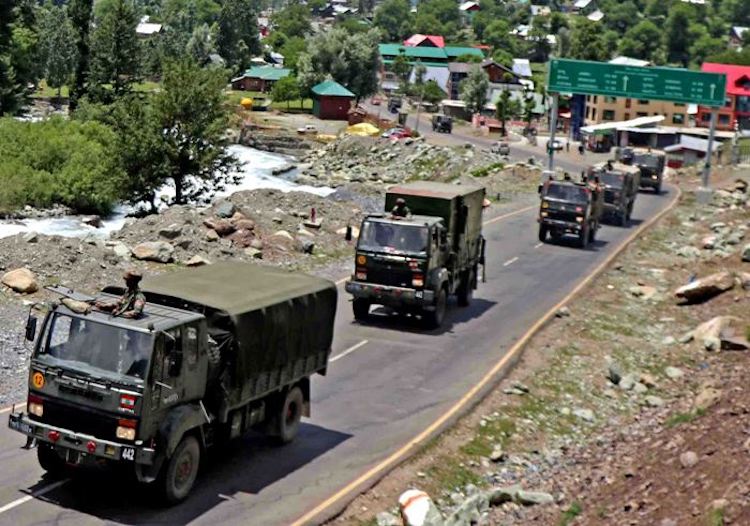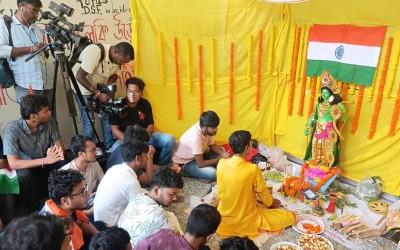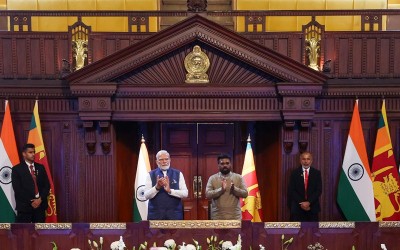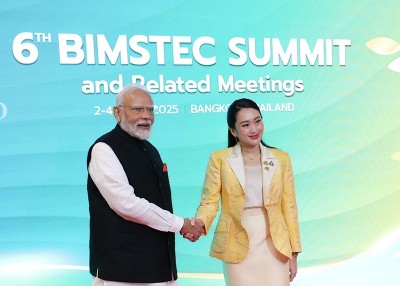
Chinese forces' conduct a complete disregard of all mutually agreed norms: India on Ladakh face-off
New Delhi/IBNS: India on Thursday said while China was amassing a large contingent of troops along the Line of Actual Control (LAC) in Ladakh since early May, its forces' conduct this year- which led to the violent faceoff causing heavy casualties- was in complete disregard of the mutually agreed norms between the two nations.
Official Spokesperson, Ministry of External Affairs Anurag Srivastava said in the weekly media briefing on the faceoff: "The incidents and face-offs along the LAC need to be understood in the larger context of recent developments.
"At the heart of the matter is that since early May, the Chinese side has been amassing a large contingent of troops and armaments along the LAC."
He said: "To provide for situations where the two sides encounter each other, a set of procedures and norms have been mutually agreed upon. These are reflected in a number of agreements and understandings. While there have been occasional departures in the past, the conduct of Chinese forces this year has been in complete disregard of all mutually agreed norms."
He said it is clearly established that it has been the Chinese actions thus far which have led to increase in tension in the region and also to the violent face-off of 15th June with casualties.
At least 20 Indian soldiers were killed in a violent face-off with Chinese soldiers along the LAC in eastern Ladakh on June 15. Unconfirmed reports claimed the Chinese side too suffered heavy casualties during the fierce clash at the Galwan Valley, which is close to Aksai Chin, an area that is controlled by China but claimed by both the countries.
Portions of what the Indian MEA Spokesperson said today:
In early May, the Chinese side had taken action to hinder India's normal, traditional patrolling pattern in the Galwan Valley area. The resulting face-off was addressed by the ground commanders as per the provisions of the bilateral agreements and protocols.
In mid-May, the Chinese side sought to change the status quo in other areas of the Western Sector. We had registered our protest on the Chinese actions through both the Diplomatic and Military channels, and made it clear that any such change was unacceptable to us. Subsequently, the Senior Commanders met on 6 June 2020 and agreed on a process for de-escalation and disengagement along the LAC that involved reciprocal actions. Both sides had agreed to respect and abide by the LAC and not undertake any activity to alter the status quo.
As I mentioned in my statement on 20th June, the Chinese side departed from these understandings in respect of the LAC in the Galwan Valley area and sought to erect structures just across the LAC. When this attempt was foiled, Chinese troops took violent actions on 15 June 2020 that directly resulted in casualties. Thereafter, both sides remain deployed in large numbers in the region, while military and diplomatic contacts are continuing.
The incidents and face-offs along the LAC need to be understood in the larger context of recent developments. That also helps to bring out the key issues that both sides are seeking to address. At the heart of the matter is that since early May, the Chinese side has been amassing a large contingent of troops and armaments along the LAC.
This is not in accordance with the provisions of our various bilateral agreements, especially the key 1993 Agreement on the Maintenance of Peace and Tranquility along the Line of Actual Control in the India-China Border Areas.
This notes in particular that ‘each side will keep its military forces in the areas along the line of actual control to a minimum level compatible with friendly and good neighbourly relations between the two countries’.
Obviously, the Indian side had to undertake counter deployments and the resulting tension has thereafter expressed itself.
Respecting and strictly observing the Line of Actual Control is the basis for peace and tranquility in the border areas and explicitly recognized so in the 1993 and subsequent agreements. Indian troops are fully familiar with the alignment of the LAC in all sectors of the India-China border areas and abide scrupulously by it.
They have been patrolling all along the LAC, including in the Galwan Valley, for a long time. All infrastructure built by the Indian side has always been on its own side of the LAC. The Indian side has never undertaken any actions across the LAC and has never attempted to unilaterally change the status quo. However, that has not been reciprocated by the Chinese side and that from time to time has led to face-offs.
Over many years, both sides have developed patterns of patrolling and it is reasonable expectation that patrols will not be obstructed in the discharge of their legitimate duties. Unfortunately, we have experienced in the last many years obstruction to patrolling that often accompany efforts to unilaterally change the status quo.
To provide for situations where the two sides encounter each other, a set of procedures and norms have been mutually agreed upon. These are reflected in a number of agreements and understandings. While there have been occasional departures in the past, the conduct of Chinese forces this year has been in complete disregard of all mutually agreed norms.
The deployment of large body of troops and changes in behavior has also been aggravated by unjustified and untenable claims. The recent shift in the Chinese position on the Galwan Valley is one example.
The maintenance of peace and tranquility in the border areas is the basis of our bilateral relationship. It is imperative that the established mechanisms are used by both parties to address the current situation. The meeting of the Working Mechanism for Consultation & Coordination on India-China Border Affairs (WMCC) yesterday was, therefore, a significant development.
It was preceded by a discussion among senior military commanders on 22 June that focused on implementation¬¬ of the understandings reached between them on 6 June 2020.
You are also aware that the Foreign Ministers of the two countries had a conversation on 17 June 2020 and had agreed that the overall situation would be handled in a responsible manner, and that the disengagement understanding of 6 June would be implemented.
We expect that the Chinese side to sincerely follow up on this understanding and ensure the expeditious restoration of peace and tranquility in the border areas.
A continuation of the current situation would only vitiate the atmosphere for the development of the relationship.
Support Our Journalism
We cannot do without you.. your contribution supports unbiased journalism
IBNS is not driven by any ism- not wokeism, not racism, not skewed secularism, not hyper right-wing or left liberal ideals, nor by any hardline religious beliefs or hyper nationalism. We want to serve you good old objective news, as they are. We do not judge or preach. We let people decide for themselves. We only try to present factual and well-sourced news.







